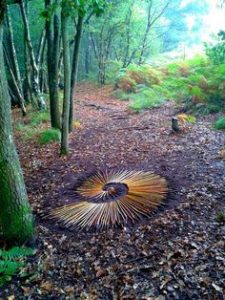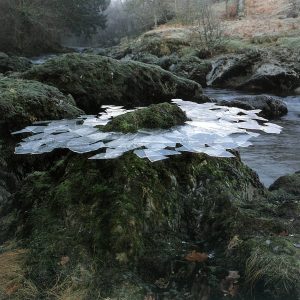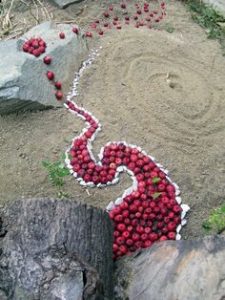Our Moving into Meditation class drew inspiration from the end of Frank Ostaseski’s wonderful book the Five Invitations. In today’s class we explored the 5th invitation to cultivate “don’t know mind.” Cultivating this mind state challenges us to traverse the ever-changing ground of uncertainty. It awakens us to what we hold most dear, to what is sacred. We listened to the voices of naturalists and writers Terry Tempest Williams, Rachel Carson and Gary Snyder describe how they encounter the sacred.
Guided Relaxation
Welcome. Welcome your whole self to this moment . . . this breath . . . taking a deep breath in . . . holding it to feel energy within and then letting it go to feel yourself letting go . . . Give yourself over to the earth . . . abiding support . . . its presence touching each moment of life . . . how holy it is . . . Sufi poet Hafiz:
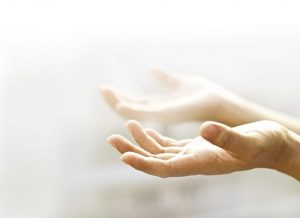 Now is the season to know that everything you do is sacred.
Now is the season to know that everything you do is sacred.
Perhaps we can feel what is sacred right now . . . we can notice how it is often hidden and we need only pause . . . breathe . . . attend to what is revealed in the fullness of time. In the gift of the time we give ourselves to feel . . . to truly receive the offerings of clouds and rain . . . earth and trees . . . how, in the fullness of time, we come to recognize them in ourselves – part of our very being . . . Sacred . . . here with us and within us. . . .
Terry Tempest Williams writes:
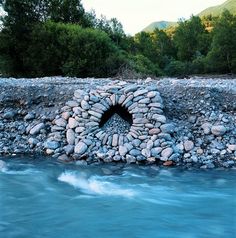 Each breaking wave, each rush of the sea on the slope of sand, reminds me why these places of pilgrimage matter. They matter to me because in the long view, I do not. I am driftwood. I am rockweed. I am osprey and the mackerel in the clutch of her feet. I am a woman standing on the edge of the continent looking out.
Each breaking wave, each rush of the sea on the slope of sand, reminds me why these places of pilgrimage matter. They matter to me because in the long view, I do not. I am driftwood. I am rockweed. I am osprey and the mackerel in the clutch of her feet. I am a woman standing on the edge of the continent looking out.
Frank O. writes:
The sacred has always existed. Everything is saturated with it. It is the nature of reality. . . . most of the time, we walk around in the sacred world with ordinary vision. . . . as though we are color blind . . . we don’t always perceive . . . the sacred. We don’t appreciate the full breadth of its beauty. We see in a conditioned way, staying on the surface of life. When we pay attention . . we realize that the sacred reveals itself continuously.
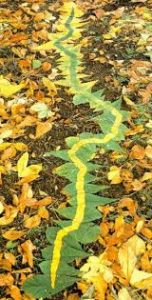 Recall moments of touching whats sacred. . . those times when you’ve stood in reverence . . . in stillness . . . in nature . . . in art . . . in music . . . Perhaps you sought it out or encountered it in surprise . . . suddenly, spontaneously . . . Can you remember your response to encountering something holy in life? Usually these encounters are so moving they continue to live inside us . . . We often experience a deep stillness that suspends our every day momentum. When time is suspended we no longer feel the urge to do, to control . . . just like with the out-breath we are released into non-doing.
Recall moments of touching whats sacred. . . those times when you’ve stood in reverence . . . in stillness . . . in nature . . . in art . . . in music . . . Perhaps you sought it out or encountered it in surprise . . . suddenly, spontaneously . . . Can you remember your response to encountering something holy in life? Usually these encounters are so moving they continue to live inside us . . . We often experience a deep stillness that suspends our every day momentum. When time is suspended we no longer feel the urge to do, to control . . . just like with the out-breath we are released into non-doing.
Williams asks:
How do we find our way back to a world interrelated and interconnected, whose priority is to thrive and evolve?. . . And what about the belief — my belief — in all that is wild?
I return to the wilderness to remember what I have forgotten, that the world can be wholesome and beautiful, that the harmony and integrity of ecosystems at peace is a mirror to what we have lost.
Consider: To where, what and who do we return to for beauty, harmony and integrity?
Frank O. writes:
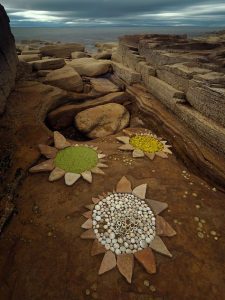 . . . Deep silence is not merely a pause between sounds. It is an inner quietness felt in the heart, still as new-fallen snow on a mountain pass. This silence . . . takes us beyond the known, beyond language, and into the sacred. . . . Silence is a natural response to the presence of the sacred no matter where it appears. Through silence, we become aware of the majesty in the ordinary; the beauty, the unity and the depth of the sacred that is always around us and within us.
. . . Deep silence is not merely a pause between sounds. It is an inner quietness felt in the heart, still as new-fallen snow on a mountain pass. This silence . . . takes us beyond the known, beyond language, and into the sacred. . . . Silence is a natural response to the presence of the sacred no matter where it appears. Through silence, we become aware of the majesty in the ordinary; the beauty, the unity and the depth of the sacred that is always around us and within us.
Birth is among the most real, honest and unglamorous of human events, common to us all. Yet anyone who has witnessed a child being born cannot help but feel a reverent hush in the emerging presence of new life. . . . Childbirth is an invitation to enter the sacred. The key that unlocks its door is love, a love unlike any we may have known before.
Death offers us the same invitation. . . . birth and death come very close to one another. It’s difficult for us to say . . . precisely when life begins or ends. Both can be times of great aliveness. Both ask us to accept our vulnerability, to be open to the unexpected and to let go of life as we have known it. Both birth and death can serve as portals to the sacred.
And here we are . . . in stillness and quiet . . . feeling our shared awareness our shared presence . . . Together we are poised at the doorway to the sacred. Everything coming and going . . . constantly changing in awareness . . . we can surrender to this ever present awareness . . . this abiding earth . . .
Against this cosmic background the lifespan of a particular plant or animal appears, not as drama complete in itself, but only as a brief interlude in a panorama of endless change.
Frank O. writes:
Letting go is entry into unknown territory. . . . Suzuki Roshi said that renunciation is not giving up the things of the world, but accepting that they go away. .. . letting go is an act of generosity. We let go of old grudges, give ourselves peace. We let go of fixed views, give ourselves to not knowing. We let go of self sufficiency and give ourselves to the care of others. We let go of clinging and give ourselves to gratitude. We let go of control and give ourselves to surrender.
Surrender is about expansion. . . . a boundless quality of being . . . [un]constrained by previously limiting beliefs . . keeping us separate and apart. . . . We are no longer enslaved by our pasts. . . . We become intimate with the inner truth of our essential nature. . . . Surrender means moving into flow. . . . Surrender happens when we stop fighting. . . . against ourselves . . . with life . . .
Gary Snyder’s Earth Verse:
Wide enough to keep you looking
Open enough to keep you moving
Dry enough to keep you honest
Prickly enough to make you tough
Green enough to go on living
Old enough to give you dreams
Together let us find our own earth verses . . . to keep us looking and moving . . . to keep us honest and tough . . . to keep us living and dreaming . . .

